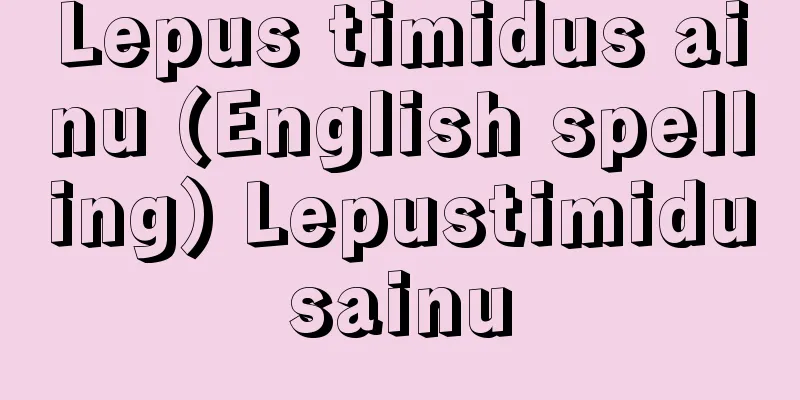Hojoki - The Record of the Guard

|
An essay from the early Kamakura period. One volume. Written by Kamo no Chomei. Completed in March 1212 (Kenryaku 2). The title is a reference to the hermitage in Hino (1 jo square, or about 3.3 meters square) where Chomei lived in his later years. It begins with an elegant prose that expresses a view of impermanence: "The flowing river never stops, yet the water is never the same," and then goes on to describe five great disasters. The book powerfully depicts the scenes of Heian-kyo collapsing in the face of successive disasters, including the great fire of 1177 that burned down one third of Kyoto, the whirlwind of 1180, the sudden and forced relocation of the capital to Fukuhara (near present-day Kobe city) by Taira no Kiyomori in the same year, the great famine of 1181-82, and the great earthquake of 1185.The book concludes with a strong tone that speaks of the impermanence of this world and the transience of human life, saying, "The world is so fragile, and so are our bodies and our homes." Next, the book describes how, due to the misfortunes that befell him, he became a monk at around age 50, and at age 60, built a hermitage in Hino. The area around the hermitage was ideal for training in Buddhism and instrumental music, and it was the place that first gave Chomei peace and tranquility free from the troubles of the secular world. Chomei praises it as being "peaceful and peaceful in a temporary hermitage, without any fears." However, at the end of the book, he suddenly rejects his attachment to the quiet hermitage, and ends by chanting "Fushau no Amida Butsu (perhaps meaning the name of Amida Buddha who extends a helping hand even when not asked by others)." The first half of the work recognizes the impermanence of this world, the second half praises the serenity of the hermitage, and the end denies them. The structure of the work is extremely tight. The Japanese-Chinese mixed writing, with Chinese readings, is powerful and makes the argument clear. The description of the five great disasters is particularly impressive, precise, realistic, and written in a tense style. It is thought to have been modeled after Yoshishige Yasutane's Chiteiki (982), but it had a great influence on later medieval literature, including the Tale of the Heike (possibly written in the late 13th century), and is a representative example of medieval hermit literature, along with Tsurezuregusa (possibly written around 1331). The Daifukukoji version is a copy said to have been written by Kamo no Chomei himself, and is highly valuable. There is also a version called the "Abridged Edition of the Hojoki" which omits the section on the five great disasters, and it is said to be either Chomei's own work or a later forgery, but there is no consensus. [Kazuhiko Asami] "Complete Commentary on the Hojoki by Yanase Kazuo (1971, Kadokawa Shoten)" ▽ "Appreciation of Japanese Classics 10: Hojoki and Tsurezuregusa by Miki Norito (1980, Shogaku Tosho)" ▽ "Illustrated Japanese Classics 10: Hojoki and Tsurezuregusa" edited by Miki Norito, Miya Tsuguo, and Masuda Muneta (1980, Shueisha)" Old type edition by Kamo no Chomei, published in 1647 (4th year of the Shoho era), owned by the National Diet Library "Hojoki" Source: Shogakukan Encyclopedia Nipponica About Encyclopedia Nipponica Information | Legend |
|
鎌倉初期の随筆。一巻。鴨長明(かものちょうめい)作。1212年(建暦2)3月成立。書名は長明が晩年に居住した日野の方丈(一丈四方、すなわち約3.3メートル四方)の草庵(そうあん)にちなんだもの。「ゆく河の流れは絶えずして、しかももとの水にあらず」という無常観を表白する流麗な文章に始まり、五つの大きな災厄がまず記述される。京都の3分の1を焼き尽くした安元(あんげん)3年(1177)の大火、治承(じしょう)4年(1180)の旋風、同年、平清盛(きよもり)によって突如強行された福原(現在の神戸市付近)への遷都、養和(ようわ)年間(1181~82)の大飢饉(ききん)、元暦(げんりゃく)2年(1185)の大地震と打ち続く大きな災厄の前にあえなく崩壊していく平安京の光景が迫力ある筆致で描かれる。そして「すべて世の中のありにくく、我が身と栖(すみか)とのはかなくあだなるさま、またかくのごとし」と、この世の無常と、人の命のはかなさが強い語調で結論づけられる。続いて長明に訪れた「折り折りのたがひめ(不遇)」のため、50歳ころ出家、60歳に及び日野に方丈の庵(いおり)を構えるに至った経過が述べられる。庵の周辺は仏道の修養、管絃(かんげん)の修練には好適の地で、そこは長明に世俗の煩わしさから解放された安息を初めて与えた地であり、「仮の庵(いほり)のみのどけくしておそれなし」と賞揚される。しかし、末尾に至り、閑寂な草庵に執着する自らを突然否定し、「不請(ふしゃう)の阿弥陀仏(あみだぶつ)(人に請(こ)われなくとも救済の手を差し伸べてくれる阿弥陀仏の御名の意か)」を唱えて終わる。 前半でこの世の無常を認識し、後半において草庵の閑居を賞美、かつ末尾ではそれらを否定するという一編の構成はきわめて緊密である。漢文訓読調を混ぜた和漢混交文は力強く、論旨を明快なものとしている。とりわけ五大災厄の描写は緊張した文体で、的確、リアルできわめて印象的である。慶滋保胤(よししげのやすたね)の『池亭記(ちていき)』(982成立)などを倣ったものと考えられるが、『平家物語』(13世紀後半成立か)をはじめ、後の中世文学に大きな影響を与えており、『徒然草(つれづれぐさ)』(1331ころ成立か)と並んで、中世の隠者文学の代表である。大福光寺本は鴨長明の自筆かといわれる写本で、その価値は高い。五大災厄の部分を欠く「略本方丈記」といわれるものもあり、長明の自作とも後人の偽作ともいわれ、定説をみない。 [浅見和彦] 『簗瀬一雄著『方丈記全注釈』(1971・角川書店)』▽『三木紀人著『鑑賞日本の古典10 方丈記・徒然草』(1980・尚学図書)』▽『三木紀人・宮次男・益田宗編『図説日本の古典10 方丈記・徒然草』(1980・集英社)』 古活字版 鴨長明作 1647年(正保4)刊国立国会図書館所蔵"> 『方丈記』 出典 小学館 日本大百科全書(ニッポニカ)日本大百科全書(ニッポニカ)について 情報 | 凡例 |
Recommend
Value Freedom - Kachijiyu (English spelling) Wertfreiheit
Max Weber argued that in order to maintain the obj...
Benton, William
Born: April 1, 1900, Minneapolis, Minnesota [Died]...
Westcott, WW - Westcott
...The goal of the group was to decipher the text...
Tomb of King Muryong (English: Muryǒng-wang-rǔng)
This ancient tomb is one of the Songsan-ri ancient...
dechirage (English spelling)
...It goes without saying that collage is also us...
Hockett, C.
...The heyday of American structural linguistics,...
Shuri
A district in the eastern part of Naha City, Okin...
Zink
…Today, the modern brass instrument known as the ...
Mack Sennett
American film producer and director. His real nam...
Alseides
…Eurydice, who became the wife of Orpheus, and Da...
Patriotism - Patriotism
〘 noun 〙 The feeling of loving and longing for one...
Related Bonds - Encosai
⇒ Small private placements Source: About Shogakuka...
Iwamuro [Hot Spring] - Iwamuro
Iwamuro Village, Nishikanbara County, Niigata Pref...
Chrodegang (English spelling)
715‐766 Bishop and saint in the Frankish period. A...
Krisa
…a series of wars in ancient Greece waged by the ...









